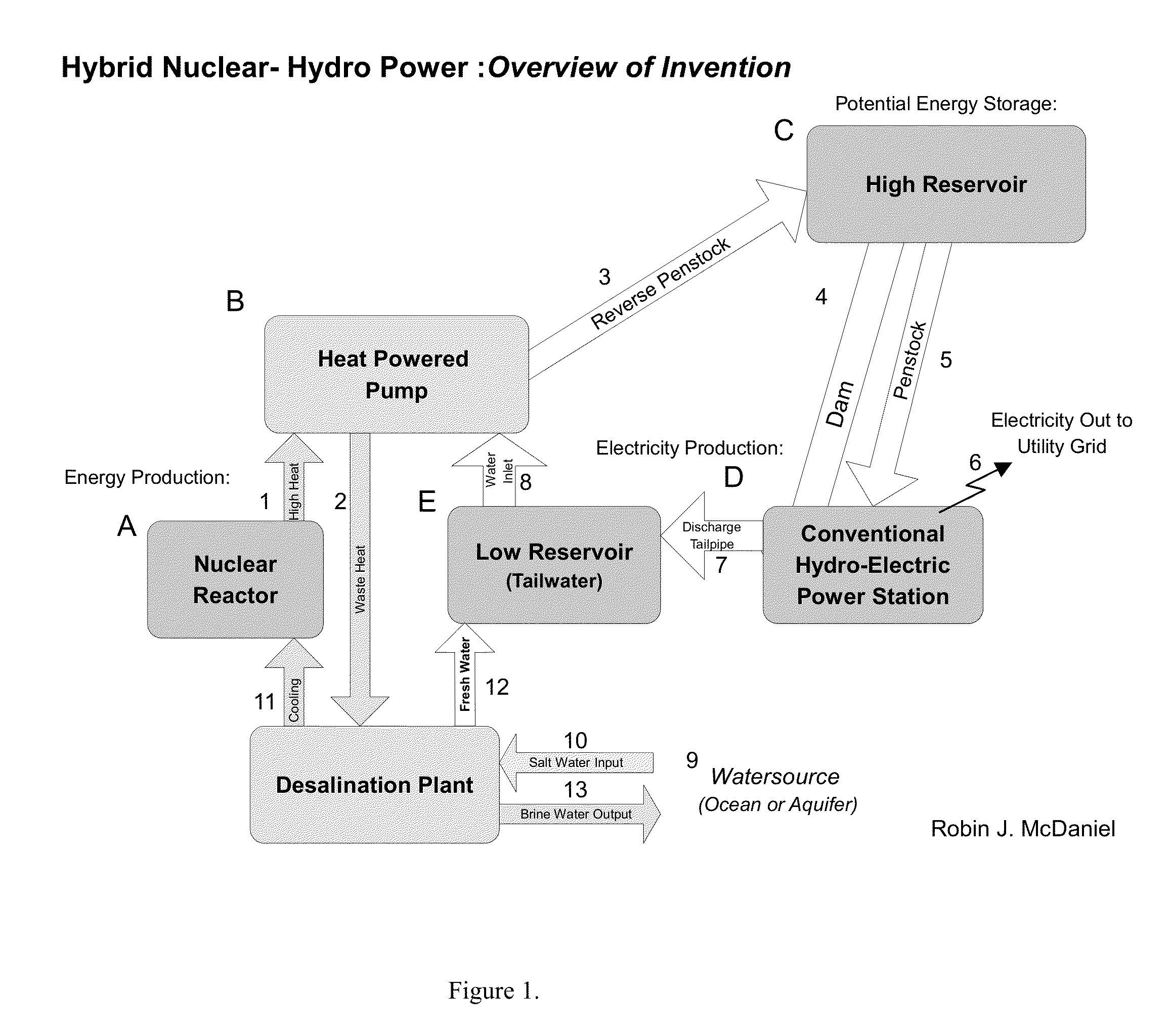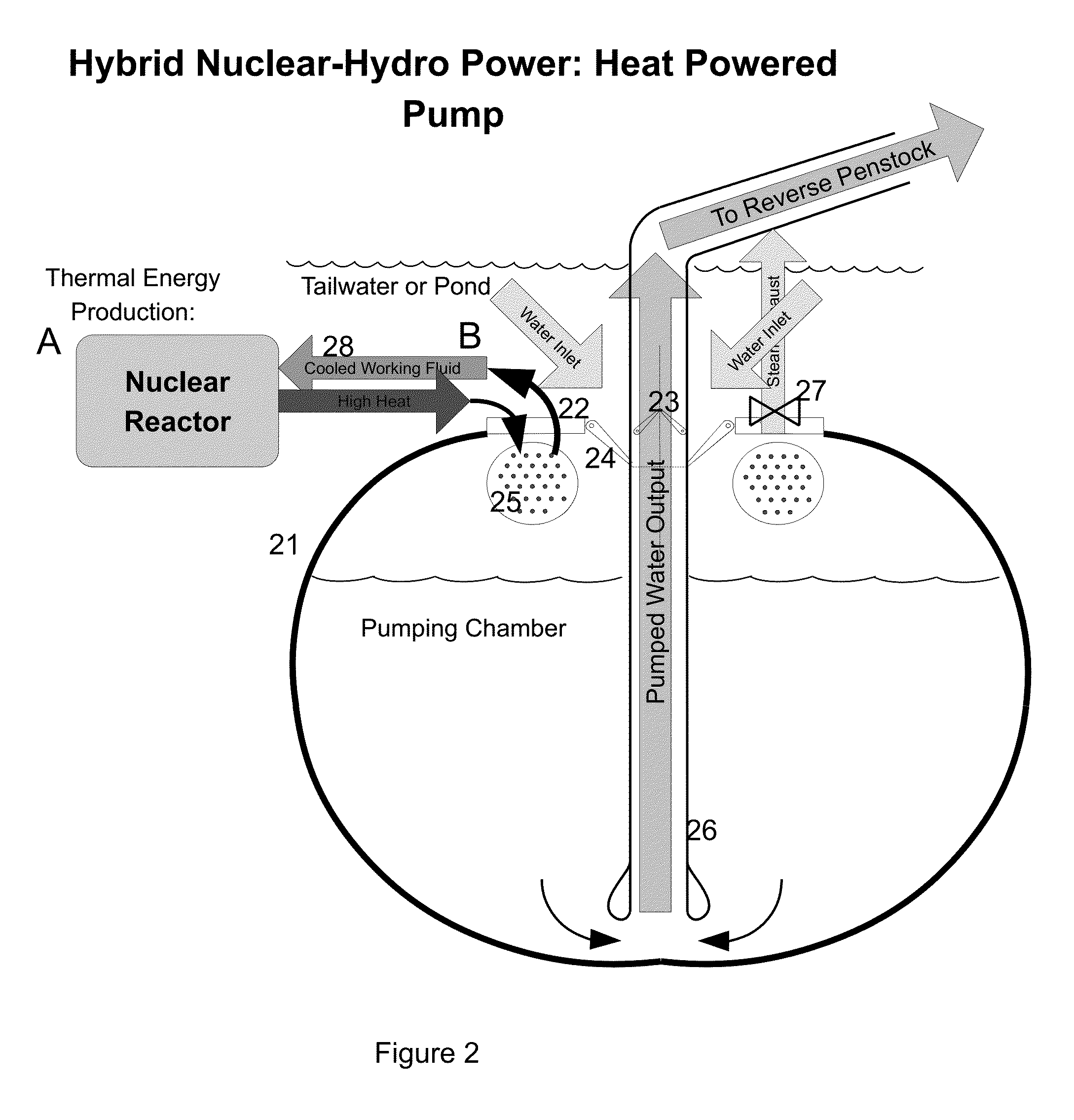Hybrid nuclear-hydro power plant
- Summary
- Abstract
- Description
- Claims
- Application Information
AI Technical Summary
Benefits of technology
Problems solved by technology
Method used
Image
Examples
Embodiment Construction
[0050]Referring now to FIG. 1: “Overview of Invention”, one embodiment of an Hybrid Nuclear-Hydro Power Plant may comprise a Nuclear Reactor A to provide heat to a Heat-Powered Pump B which takes water from a Low Reservoir E and lifts the water to a High Reservoir C where a Hydro-Electric Power Station D uses the potential energy of the reservoir to generate electricity. In one embodiment of a Hybrid Nuclear-Hydro Power Plant may utilize the waste heat from the Heat-Powered Pump B to provide low-value heat to a Desalination Plant, thus returning the coolant back to the Nuclear Reactor A after making fresh water, which may be deposited into the Low Reservoir E or otherwise distributed.
[0051]When the Nuclear Reactor A is turned on, and sufficient heat is achieved, a conduit 1 conveys the high value heat to a Heat Powered Pump B, which utilized inlet water 8 from the Low Reservoir E, via a created difference in pressure, lifting the water through a Reverse Penstock 3 into the High Rese...
PUM
 Login to View More
Login to View More Abstract
Description
Claims
Application Information
 Login to View More
Login to View More - R&D
- Intellectual Property
- Life Sciences
- Materials
- Tech Scout
- Unparalleled Data Quality
- Higher Quality Content
- 60% Fewer Hallucinations
Browse by: Latest US Patents, China's latest patents, Technical Efficacy Thesaurus, Application Domain, Technology Topic, Popular Technical Reports.
© 2025 PatSnap. All rights reserved.Legal|Privacy policy|Modern Slavery Act Transparency Statement|Sitemap|About US| Contact US: help@patsnap.com



